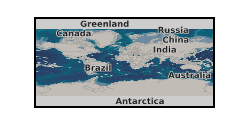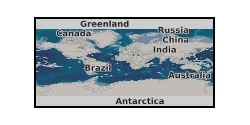Pore space
Type of resources
Topics
Keywords
Contact for the resource
Provided by
Years
Formats
Update frequencies
-

The datasets contain 5 stitched X-ray micro-tomographic images (grey-scale, doped, difference, segmented porespace and segmented micro-porespace with porespace) and 3 X-ray nano-tomographic images of a region of microporous porespace in Estaillades Limestone. The x-ray tomographic images were acquired at a voxel-resolution of 3.9676 µm using a Zeiss Versa XRM-510 flat-panel detector at 70 kV, 6W, and 85 µA with an exposure time of 0.037s and 64 frames. The X-ray nano-tomographic images were reconstructed using a proprietary filtered back projection algorithm from a set of 1601 projections, collected with the Zeiss Ultra 810 with 32nm voxel size using a 5.4keV energy quasi-monochromatic beam with an exposure time of 90s. The data was collected at Imperial College London and Zeiss Labs with the aim of investigating pore-scale microporosity in carbonates with a heterogenous pore structure. Understanding the effect of microporosity on flow is important in many natural and industrial processes such as contaminant transport, and geo-sequestration of supercritical CO2 to address global warming. These tomographic images can be used for validating various pore-scale flow models such as direct simulations, pore-network and neural network models for upscaling flow across scales.
-

The datasets contain time-resolved synchrotron X-ray micro-tomographic images (grey-scale and segmented) of multiphase (brine-oil) fluid flow (during drainage and imbibition) in a carbonate rock sample at reservoir pressure conditions. The tomographic images were acquired at a voxel-resolution of 3.28 µm and time-resolution of 38 s. The data were collected at beamline I13 of Diamond Light Source, U.K., with the aim of investigating pore-scale processes during immiscible fluid displacement under a capillary-controlled flow regime. Understanding the pore-scale dynamics is important in many natural and industrial processes such as water infiltration in soils, oil recovery from reservoir rocks, geo-sequestration of supercritical CO2 to address global warming, and subsurface non-aqueous phase liquid contaminant transport. Further details of the sample preparation and fluid injection strategy can be found in Singh et al. (2017). These time-resolved tomographic images can be used for validating various pore-scale displacement models such as direct simulations, pore-network and neural network models, as well as for investigating flow mechanisms related to the displacement and trapping of the non-wetting phase in the pore space.
 BGS Data Catalogue
BGS Data Catalogue